

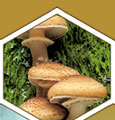
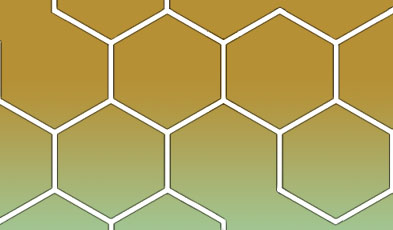


   |
 |
  |
|
Descriptions |
Genera |
|
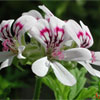 |
Angiospermae
(flowering plants) Campbell p.579, 598-604 Flowers and fruits uniquely distinguish this phylum. Flowering plants have female reproductive structures (ovules enclosed in a carpel) as well as male reproductive structures (stamens), which may be or may not be on the same flower. Angiosperm is the dominant phylum with greater success in completing their life cycle due to coevolution of plants with land animals. |
|
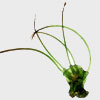 |
Anthocerophyta
(hornworts) Campbell p.580 These are nonvascular plants. Named from the horn-shaped, elongate sporophyte that is embedded in the gametophyte by a foot. A nitrogen-fixing cyanobacterium. |
|
|
|
Bryophyta
(mosses) Campbell p.580 These are nonvascular plants. They live primarily in gametophyte stage, the green and photosynthetic sporophyte stage only appears during the early life. |
|
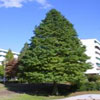 |
Coniferophyta
(conifers) Campbell p.593, 595 Most of these cone-bearing gymnosperms are trees, although some are shrubs and creeping, prostrate conifers. Confiers dominate many northern temperate forests: they are also common in the tropics and southern temperate forests. They have close association with mycorrhizae to extract nutrient in poor-quality soil. |
|
 |
Cycadophyta
(cycads) Campbell p.593-94 Range from shrubs (0.3m) to tree height (18m). They produce naked seeds, therefore, they are classified as gymnosperms. Cycads tend to have unbranched trunks, under or above ground, with pith but little wood. |
|
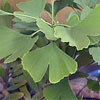 |
Ginkgophyta
(maidenhair tree) Campbell p.593-94 Ginkgo biloba is the only genus and species of phylum Ginkgophyta, a phylum of vascular seed plants. Features that characterize the ginkgo include leaf veins that each branch into two smaller veins, active cambium (cells that produce wood), and fleshy, exposed ovules. |
Ginkgo |
 |
Gnetophyta
(gnetophytes) Campbell p.593-94, 600 They are vascular seed plants, distinct from other gymnosperms; gnetophytes have long, water-conducting tubes called vessels. Vessels form when cells join end to end in the xylem tissue and are common in flowering plants. Most are dioecious, bearing male and female cones on different plants. |
|
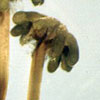 |
Hepatophyta
(liverworts) Campbell p.580 These are nonvascular plants. They are commonly called liverworts due to the liver-shaped outline of their gametophyte. Found in moist habitats and can be distinguished from mosses by their lobe shape and less-complex sporophyte. |
|
 |
Lycophyta
(quillwort, club moss) Campbell p.578, 586-87 They are evergreen vascular plants bearing neither seeds nor flowers. The glossy leaves are arranged in spirals and held close to the branches, this leaves characteristic are called microphylls. Microphylls have only one vein and are not associated with a leaf gap. |
|
 |
Pterophyta
(fern, horsetail) Campbell p.586-88 Ferns are seedless vascular plants, like bryophytes, psilophytes, lycophytes, and sphenophytes, reproduce and siperse by means of spores. The main difference from these other phyla is that fern sporophytes have megaphylls, a relatively large leaf with a web of veins. |